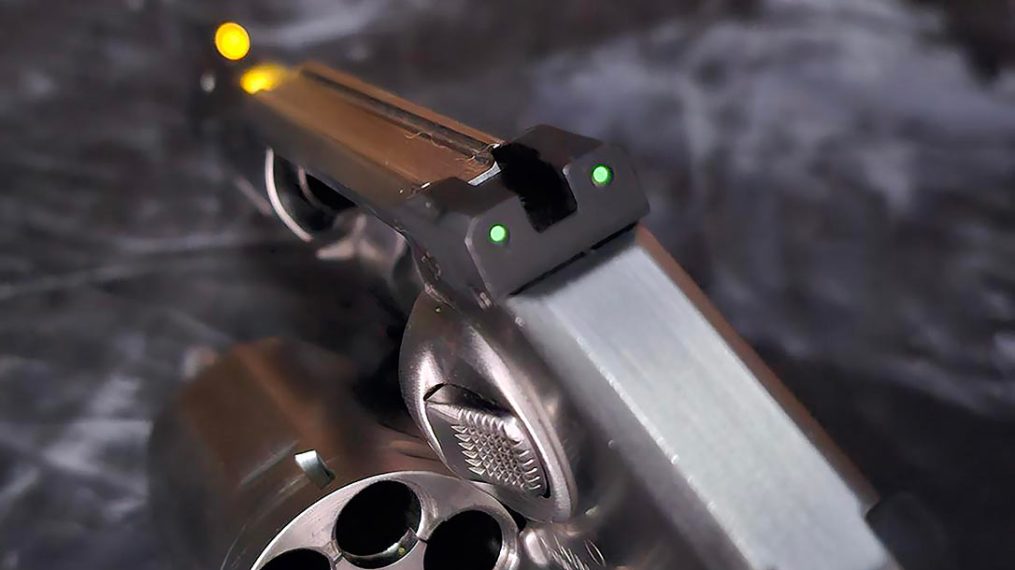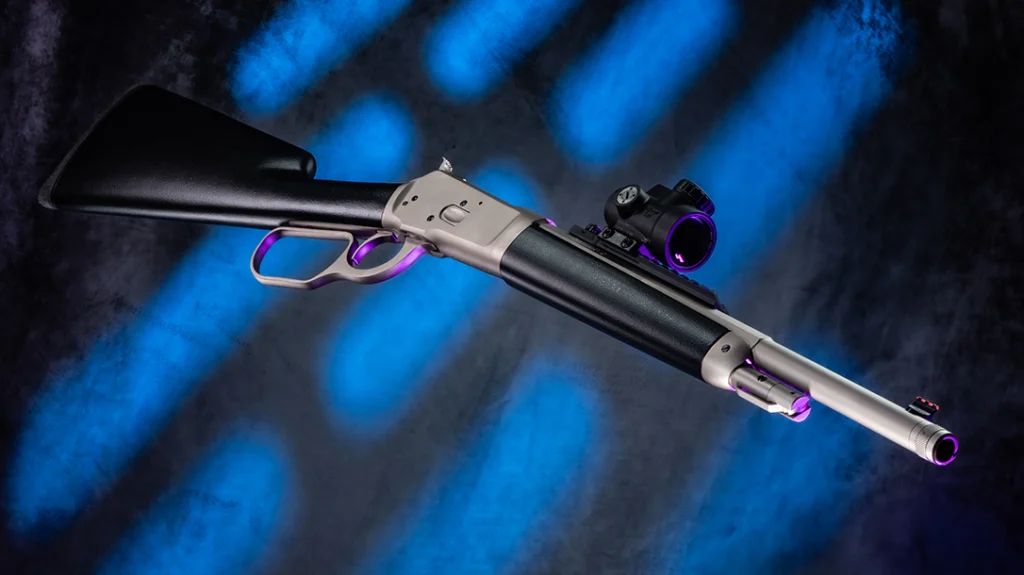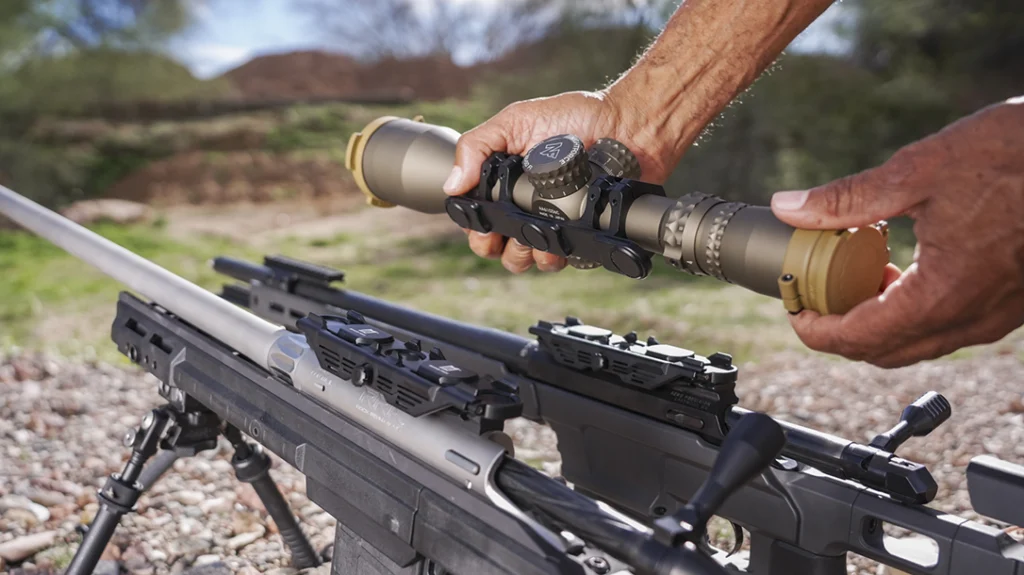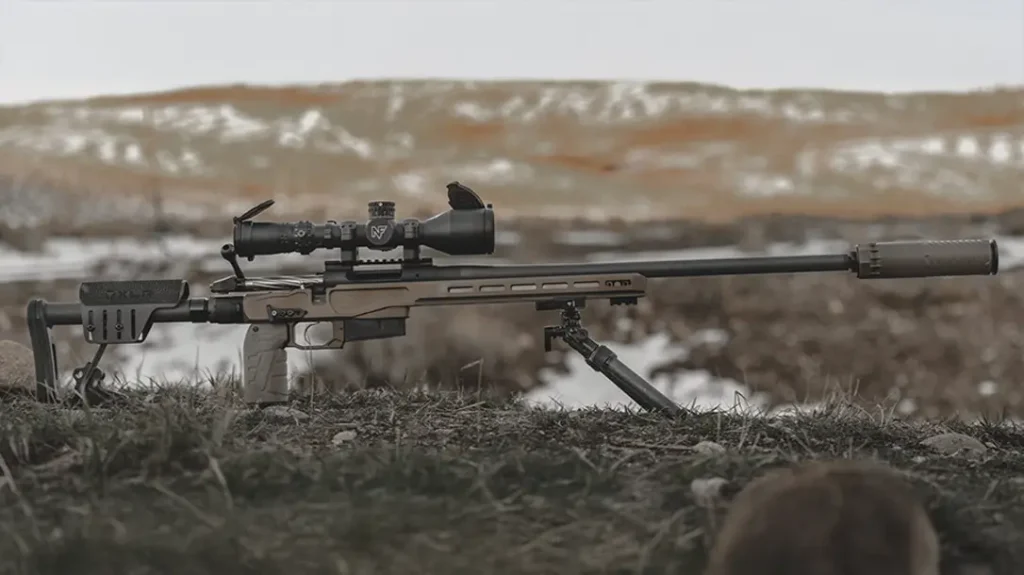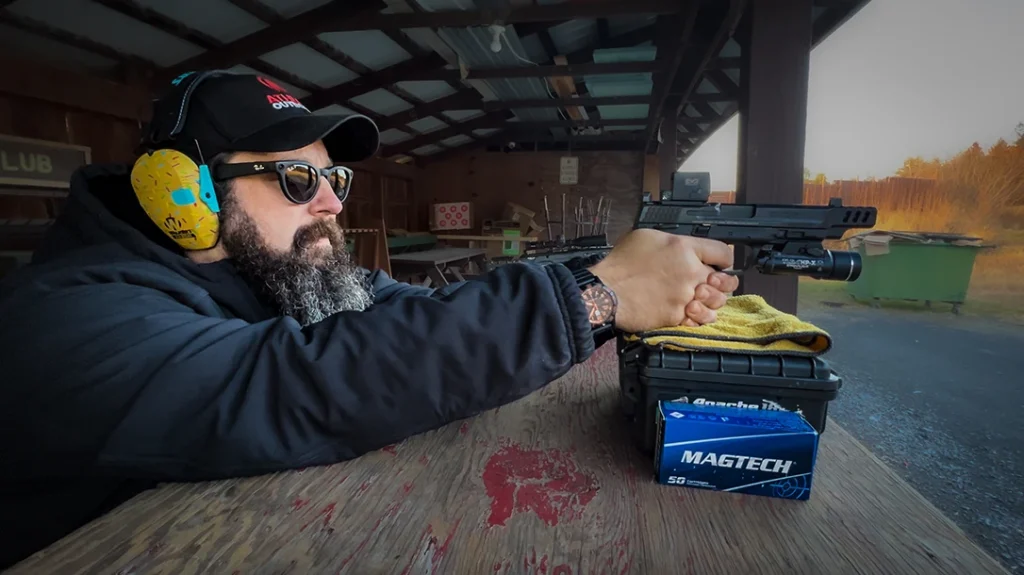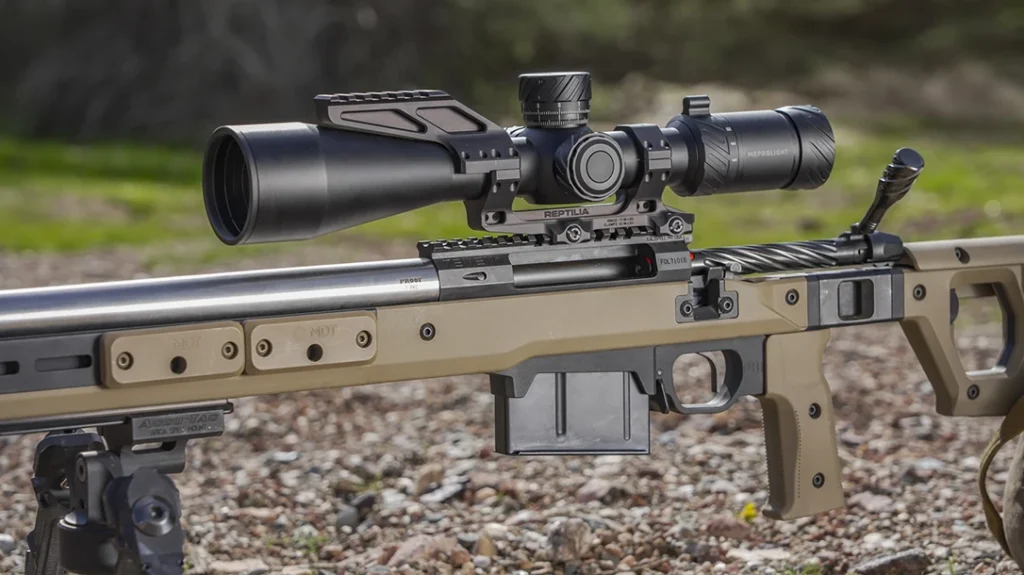It is important to acknowledge that a firearm without sights is a firearm that cannot perform to the best of its ability. Sights are crucial for any type of firearm to have because these devices allow shooters to properly aim and hit their targets. To help better familiarize you with these objects, let us take a look at six of the most common optics on the market in this Shooting 101 Guide to Sights.
A Basic Guide to Sights
Iron Sights
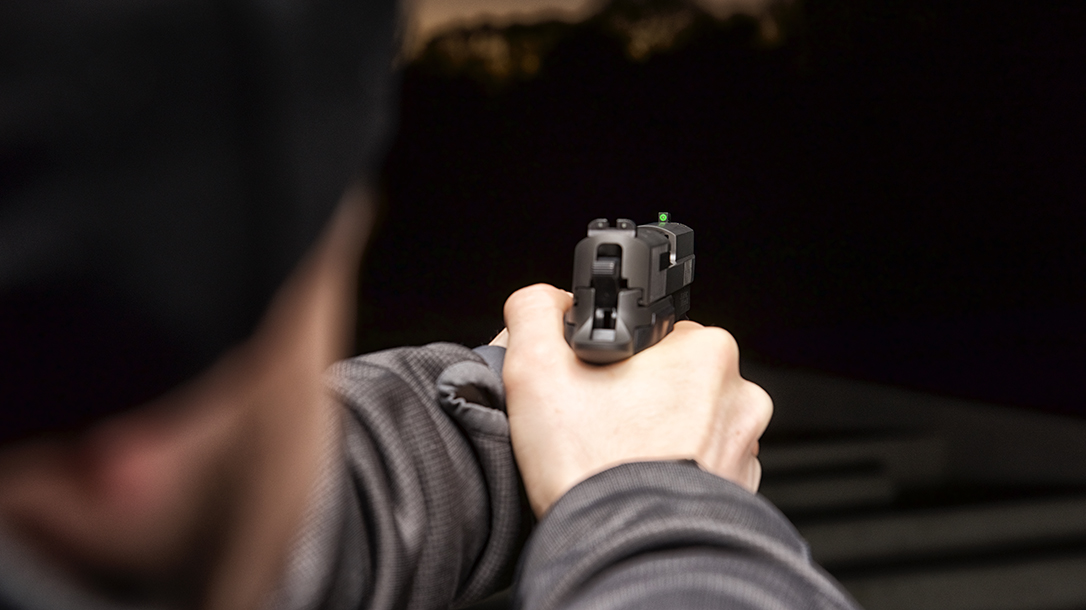
One of the most common types of sights you will come across is known as iron sights. These sights are made up of two parts known as the front and rear sights. Front sights are also referred to as your “post,” and rear sights are referred to as your “notch.” To properly aim at your target, your main focus should be on your front sight. These types of sights are also referred to as open sights.
Advertisement — Continue Reading Below
Since most pistols, rifles and shotguns are already manufactured with these types of sights, they are a good first step to familiarize you with these devices. Iron Sights are inexpensive, durable, and easy to use, which I find makes them extremely beginner friendly.
Peep Sights
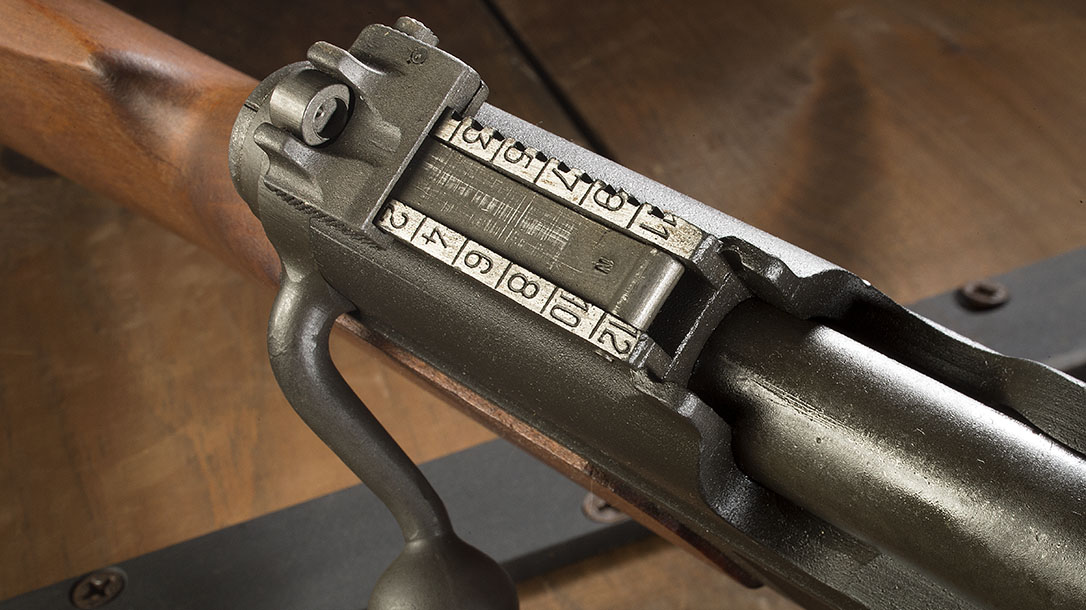
Peep sights, also called aperture sights, are optics that you commonly find used on rifles. These sights include a front sight and a circular opening or lens that allows a shooter to focus on their target. To aim with these sights, a shooter will bring their front sight into the center of the opening. The opening of the hole is small enough to allow light to bend through, which sharpens the image of your target and limits outside distractions. Overall, aperture sights are great to use because they allow a shooter to aim more accurately.
Advertisement — Continue Reading Below
Telescopic Sights
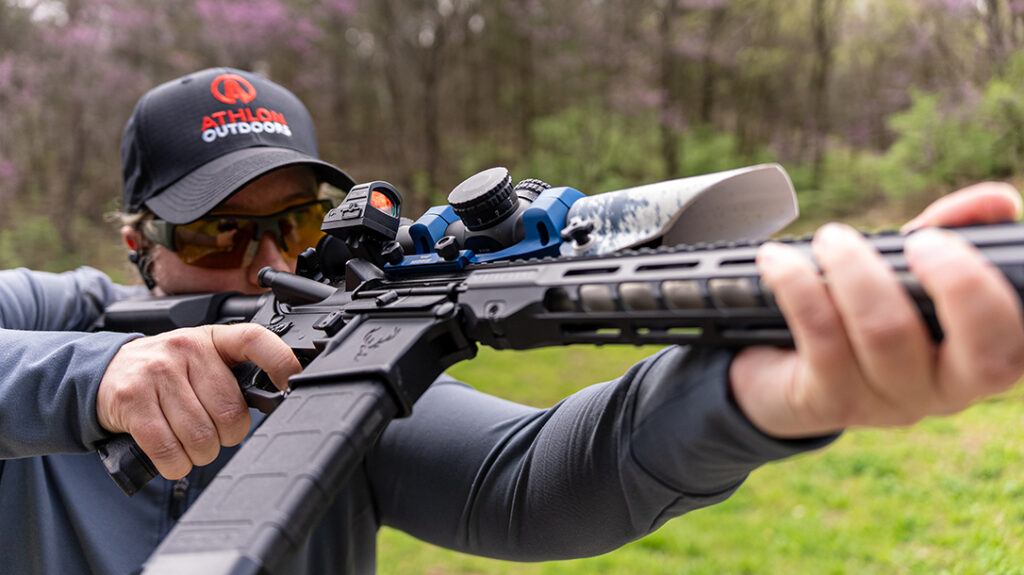
The third sight we will be discussing are known as telescopic sights but are also commonly referred to as scopes. A riflescope is mounted on top of your firearm and resembles a telescope. This sight operates by gathering light to brighten an image and will use mirrors and lenses to magnify a target. Telescopic sights are great to use for long-distance shooting because of their accuracy. These optics are typically used on rifles and are popular to use when hunting.
Holographic Sights
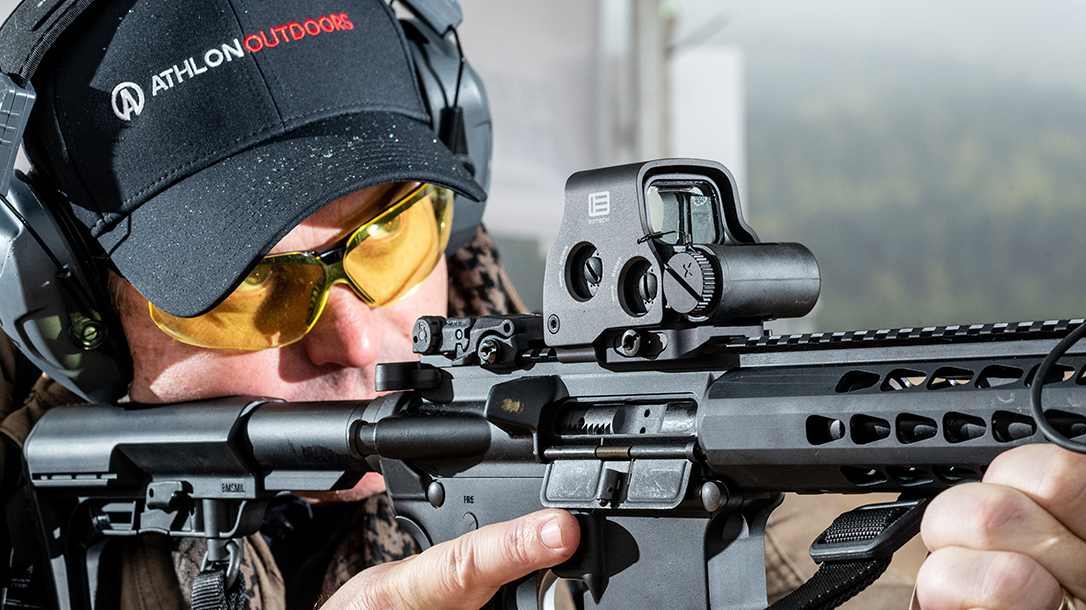
Advertisement — Continue Reading Below
Holographic sights are another popular choice among shooters and operate by using a laser to project a holographic reticle onto the lens. For those unaware, a reticle is a pattern of vertical and horizontal fine lines that are built into the eyepiece of the device. Holographic sights will produce a 2- or 3-dimensional image of the reticle while the laser will illuminate the hologram for the shooter to view. These types of sights are made to use with rifles and operate well in low-lighting environments. However, a downfall worth mentioning is that holographic sights are costly compared to other types of sights.
Laser Sights
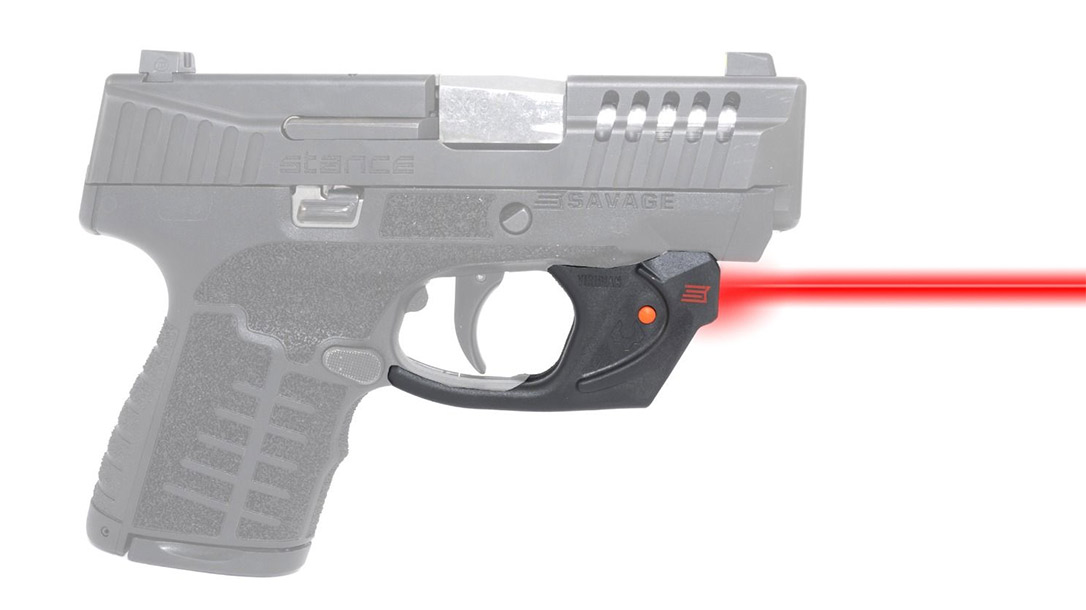
In my personal opinion, one of the coolest types of optics on the market are laser sights. This sight operates by attaching a device onto your firearm and projecting a beam of light onto your target. These types of sights can be attached to pistols, rifles and shotguns and are great to use for home defense. Many individuals love laser sights because they are an easy way to improve your accuracy and target acquisition.
Advertisement — Continue Reading Below
For these types of sights, you can also choose between the colors red or green for your laser. A considerable difference to note between the two colors is that green lasers maintain excellent visibility in bright lighting conditions compared to red lasers. Nonetheless, it is important that you recognize that some states do have regulations pertaining to laser sights. Be sure to research and educate yourself on your local and state laws regarding this type of optic.
Red Dot Sights
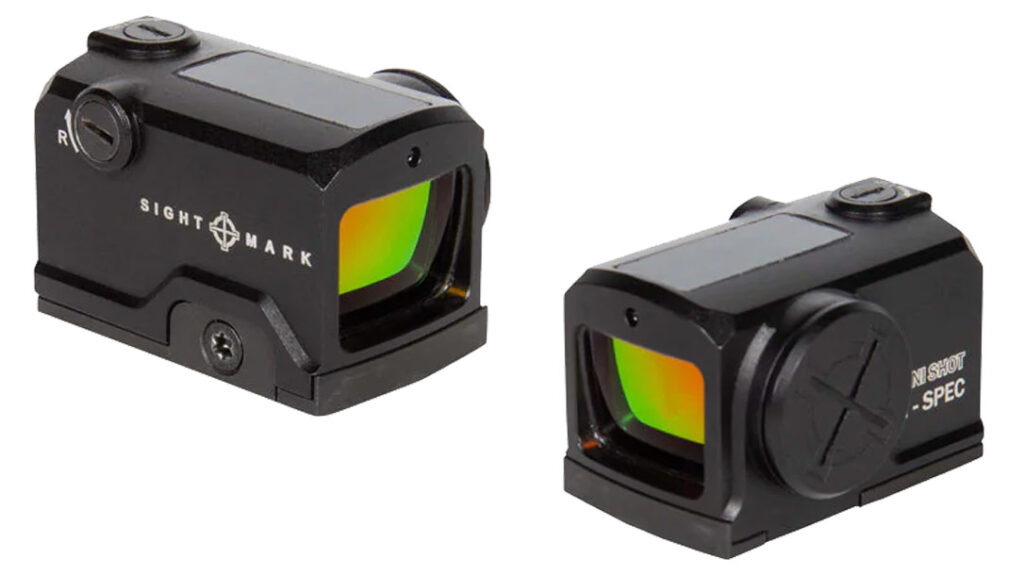
The last and most commonly known sights are red dot sights, which are also referred to as reflex sights. These sights are easy to operate and work by having a glass lens that has a small illuminated dot in the middle. It is important to remember that reflex sights do require batteries, but some red dots on the market can work off of solar power. These sights are great for medium to short distances and are best used on pistols and rifles. Regardless of improved aim, red dot sights have a few disadvantages such as poor battery life, cost and the extra weight added onto your firearm.
Advertisement — Continue Reading Below
Final Shots
If you want to shoot well, learning different sights and their importance is a necessity for any shooter to master. Once you understand the world of optics you will have nothing holding you back from reaching all your firearm goals. While the sights I discussed today are not every optic available on the market, it is a start in the right direction and one that will put you on the path to becoming an even better shooter.
Find a place to shoot at NSSF.org.
